To understand the question, “what is deburring” you have to understand the meaning of burrs. If you deal with machining parts, you must have come across burrs on your parts at one time or another. Burrs can affect the quality of parts you make and render their surface unsmooth. Therefore, deburring is essential in machining.
As important as deburring parts is, most fabricators don’t know how it should be done rightly. If you’re looking for a better way to remove your burrs, you’ll find that here. You’ll also learn how burrs occur in machining and how they cause defects in machining.
What is a burr, and how does it affect machining?
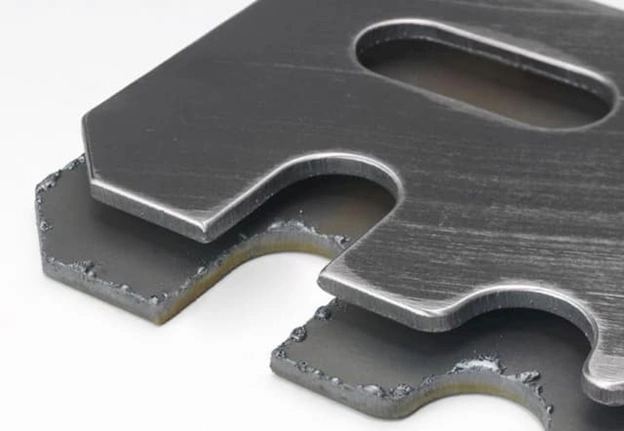
Burrs are small, sharp imperfections on the surface of machined parts. They are what we can call “impurities” affecting the beauty of a smooth machined surface.
Metal parts pass through a series of processes during production. Some of the processes they pass through include stamping and milling. These processes are meant to shape the machining parts to the desired form. However, they are usually not perfect. It is such imperfections that leave small metal ridges or protrusions on the machined surface. It is these small ridges we call burrs.
Imagine working so hard to produce a part only to find certain small ridges on the smooth surface; how will such a machined part look? Maybe not too attractive. That is what burrs do to the surface of metal parts. It affects their smoothness and may even be injurious.
Seeing a smooth surface, a person might decide to handle a machined part without much caution, only to end up injured by burrs on the surface. Burrs compromise the attractiveness and quality of finished parts. Therefore, deburring parts is essential. But what is deburring? It is the process of removing burrs. It helps to eliminate all imperfections on the surface after welding or machining, leaving behind a smooth, quality metal part.
What causes burrs when machining?
Burrs can occur in different machining stages. It is a common occurrence in the machining process. However, one can try to limit its presence on machined parts or even avoid it. To better understand how burrs occur in machining, we’ll list the machining processes that cause burrs in two sections. Burrs can occur under the machining process or cutting process.
Machining process that may leave burrs on metal surfaces include:
- Drilling
- Engraving
- Milling
- Turning
The following are the cutting processes that may leave burrs on the metal surface
- Blanking
- Punching
- Laser cutting
- Plasma Cutting
- Shearing
There are chances that if your machined parts pass through any of these processes, they’ll have burrs on their surface.
Also, other factors contribute to burrs formation. Those factors include:
1. The skillfulness of the operator
If the machine operator is skilled and the machine configuration is appropriately done, burrs may be reduced to their minimum. On the other hand, if an inexperienced operator machines a part, it may have more burrs than expected. Therefore, it’s not just about the processes; it’s also about the operator.
2. Thickness and Grade of the Material
If you work with a quality material that’s easy to cut, you may not have to perform any post-processing. This is because working with such material will be easier, hence, leaving little or no burrs behind.
Burrs can occur in machining in three different ways. They are:
Rollover Burrs:
If you find tiny bits of curled metals on the surface of your machined parts projecting up, then those are rollover burrs. They are the most common type of burrs.
Breakout Burrs:
When you see tiny bits that look like they’re breaking out of your machined part, you may be looking at breakout burrs. They have an upswell shape, which explains why they look like they want to breakout.
Poison Burrs:
This is the third way burrs can occur on machining. You’ll identify them when you see tiny bits at the end of the machined part extending sideways.
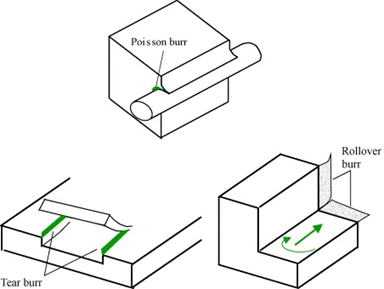
How do you deburr?
There are different methods to choose from if you wish to deburr metal parts to obtain a smooth finish. Here are few methods on how to remove burrs from metals:
1. Manual deburring
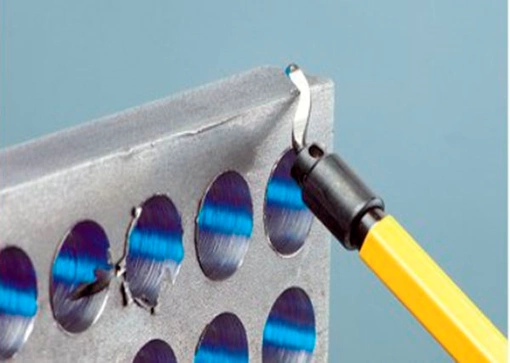
If you have a small part that you want to deburr, you can opt for the manual deburring method. It is cheaper but slower. You don’t need a big machine to perform manual deburring. All you need is to get some simple tools like deburring knives, sandpaper, files, and other polishing tools. However, this has to be done with skills to not cause more damage to your parts. It is the traditional way of deburring, and it can be stressful. If you have a large part or parts to deburr, adopting the manual deburring method may not be feasible, it may be more challenging.
2. Grinding and rolling
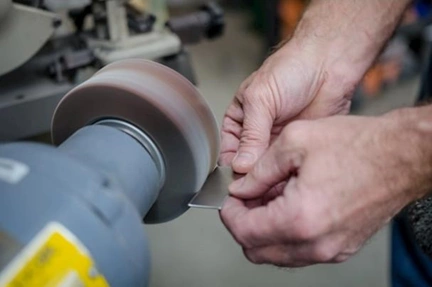
You need a machine for this type of deburring. Grinding and rolling is a mechanical method of removing burrs, producing a high-quality finish at ease. It is similar to manual deburring but faster and cost-efficient.
3. Electrochemical deburring
If you make small metal parts with burrs, getting rid of such burrs might be challenging or impossible with other blurring methods. In that case, what you need is electrochemical deburring. You can opt for this method if you have burrs in what seems to be unreachable areas after using other deburring methods.
Electrochemical deburring uses an electrode that has a similar shape to the edge you want to deburr. As the name sounds, it uses electricity and chemicals to remove burrs. Therefore, to carry out electrochemical deburring, you need an electric current and an electrolyte. You can use either sodium chloride (the table salt) or sodium nitrate as the electrolyte. The solution coupled with the electric current will remove the burrs for you without stress. This method is fast and offers high precision in difficult areas.
4. Hole deburring
Perhaps you already understand the idea behind this method by merely seeing its name. It is a deburring method you adopt if you have burrs in a hole. You can’t deburr a hole with the same method you use to deburr a flat surface; thus, the essence of hole deburring. There are different tools to use for hole deburring, and the process involved is easy.
To perform hole deburring, you need to spring-load a cutting tool and mount it on a spindle. Position the tool appropriately to easily pass through the hole and smoothen out the burrs without causing more scratches or damages to the part. Check if your cutting tool has a tapered end. If it does, you can use it to create a chamfer at the front of the hole to make the deburring process easier and better. This deburring method is fast and cost-effective.
5. Brushing
Brushing involves scrubbing the burr with a brush, but not the common brush, you know. It requires a special type of brush made of abrasive materials. The principle adopted in this method is similar to the manual method that uses sandpaper and similar tools.
However, unlike the manual method, you can perform brushing by mounting the special brushes meant for this purpose on machine tools. Such automation makes these processes easier and much more efficient. If you’re looking for a fast and cost-effective method to deburr both simple and complex pieces, you can opt for brushing.
Design considerations and cost-saving tips
There are some factors you can consider when making your machining parts. These factors will help to save cost and time. They are:
1. Minimize or Prevent Burrs
Yes, it is possible to minimize or prevent burrs on your metal parts. You can achieve this by learning the appropriate ways to operate the machine and configure it rightly. You should minimize or prevent burrs during machining as much as you can. This is especially important when you’re working on expensive or difficult parts.
2. Only Remove Burrs When Necessary
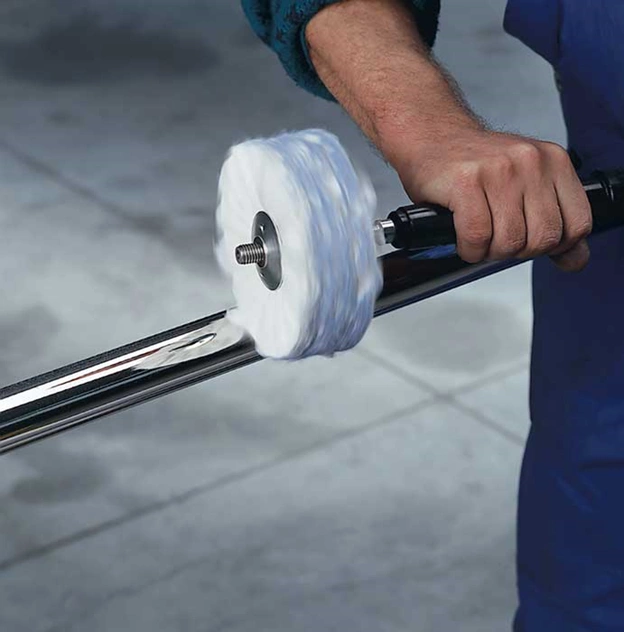
Not all situations warrant that you remove burrs from your machined piece. Sometimes, it is irrelevant to remove them. For instance, if you make a part that will still be sent to another machining shop for further processing, you may not have to remove the burrs on it. It may get more burrs in the next machining process.
Why not leave it so that all burrs can be removed at the final stage? If you design a part and find burrs in areas, you’ll carve inside during final production. You don’t need deburring if the part to be carved will not cause injury to anyone, and it won’t affect the part’s functionality.
3. Abrasive Brushing is More Economical
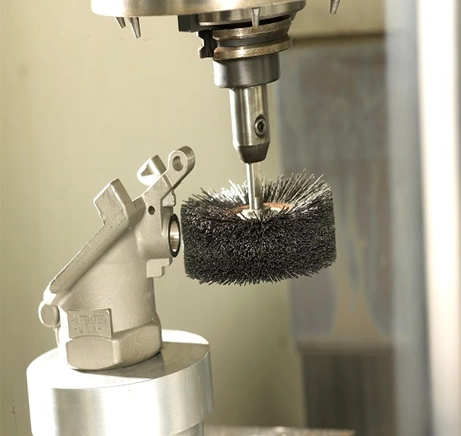
With abrasive brushing, you can deburr multiple edges at a go, thus, saving you cost and time. The brushes also last longer, preventing the need to spend on new deburring tools always.
Conclusion
It is crucial to know which deburring method is right for your part so that you don’t cause more damages to the piece while also wasting time and cost. If rightly done, deburring can help give the smooth, perfect finish you need for your machining parts. However, you must also know when deburring is unnecessary, as such can save you cost and time.
RapidDirect Machining Services
Looking for a machining company that can bring your parts production to life? RapidDirect is the perfect choice for you. Apart from offering machining services, we ensure your products are free from any burrs and look as professionally machined as possible.
No matter what tolerance, materials, surface finish you need for your CNC parts, we are here for you. We offer quick-turn prototypes in one day or production parts for months. You can rely on RapidDirect to deliver the quality services you desire within the promised lead time.
You don’t have to be in our office to seek our service. All you need to do is send us your design file, and we’ll send a quotation within 12 hours. We also offer a free review of your design feasibility for manufacturing (if you wish).


